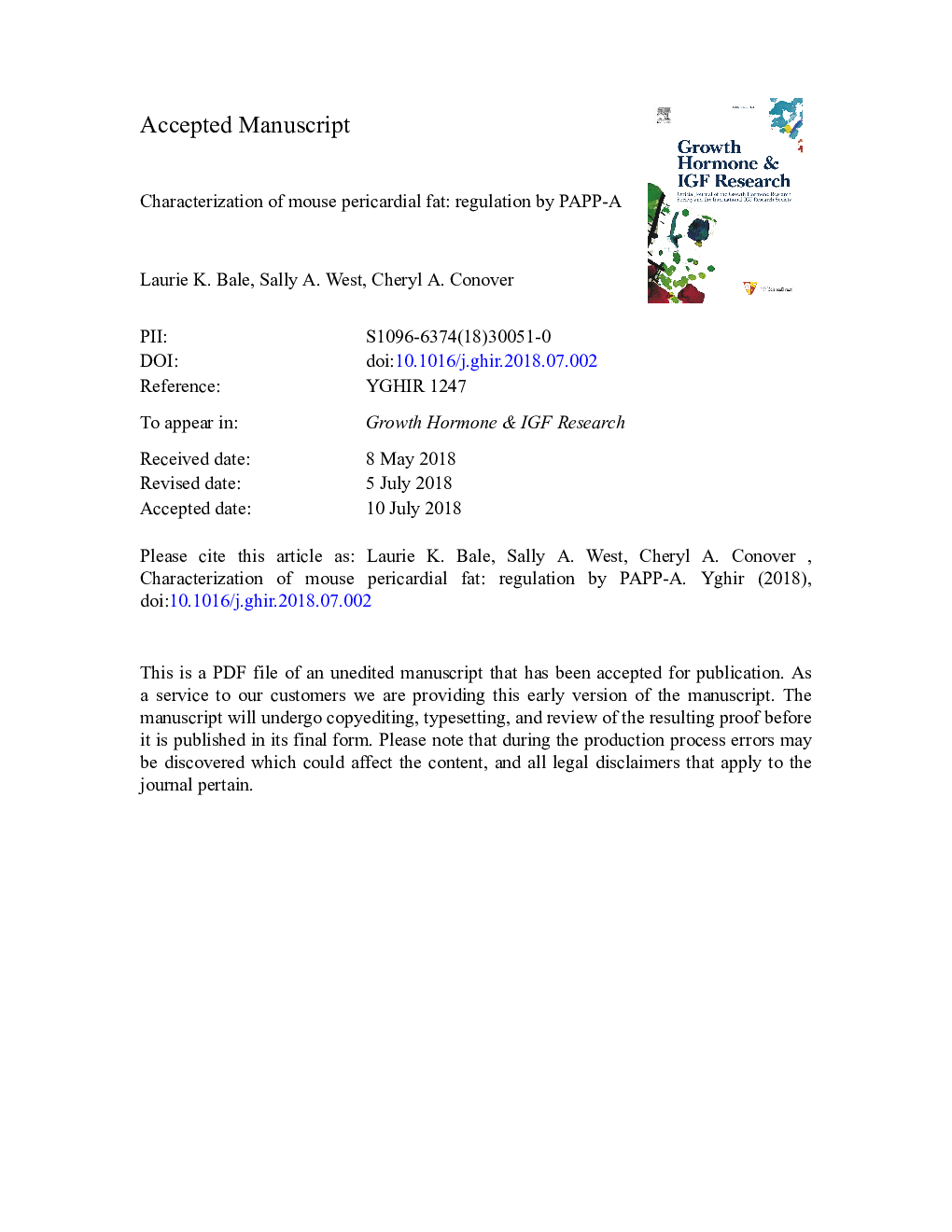| Article ID | Journal | Published Year | Pages | File Type |
|---|---|---|---|---|
| 8631591 | Growth Hormone & IGF Research | 2018 | 32 Pages |
Abstract
Although implicated in cardiovascular disease, little is known about the fat surrounding the heart. In humans, epicardial fat is the visceral fat depot of the heart, which directly contacts the myocardium. This strategically placed fat depot is thought to produce bioactive molecules that could affect cardiac function. A major limitation in understanding the biology of epicardial fat is its restricted access in humans and its seeming absence in commonly-used experimental animal models. Although laboratory mice do not have epicardial fat per se, they do have a fat depot around the heart. In this study, we found that mouse pericardial fat has the molecular signature, small adipocyte size, and resistance to differentiation consistent with visceral fat. In addition, we show that mouse pericardial fat is regulated by pregnancy-associated plasma protein-A (PAPP-A), a key modulator of local insulin-like growth factor bioavailability. PAPP-A is highly expressed in mouse pericardial fat at levels equivalent to those in mesenteric visceral fat and 10-fold higher than in subcutaneous inguinal fat (Pâ¯=â¯.0003). Cultured pre-adipocytes isolated from pericardial fat show 2-fold increased PAPP-A secretion compared to pre-adipocytes isolated from inguinal fat. Furthermore, PAPP-A knock-out mice fed a high fat diet for 20â¯weeks have significantly reduced pericardial fat (by 60%; Pâ¯<â¯.0001) compared to wild-type littermates. There was no significant difference in inguinal fat between wild-type and PAPP-A knock-out mice. These data characterize a new mouse model of visceral-like pericardial fat and lay a foundation for understanding its role in human heart disease.
Related Topics
Life Sciences
Biochemistry, Genetics and Molecular Biology
Endocrinology
Authors
Laurie K. Bale, Sally A. West, Cheryl A. Conover,
